About Us
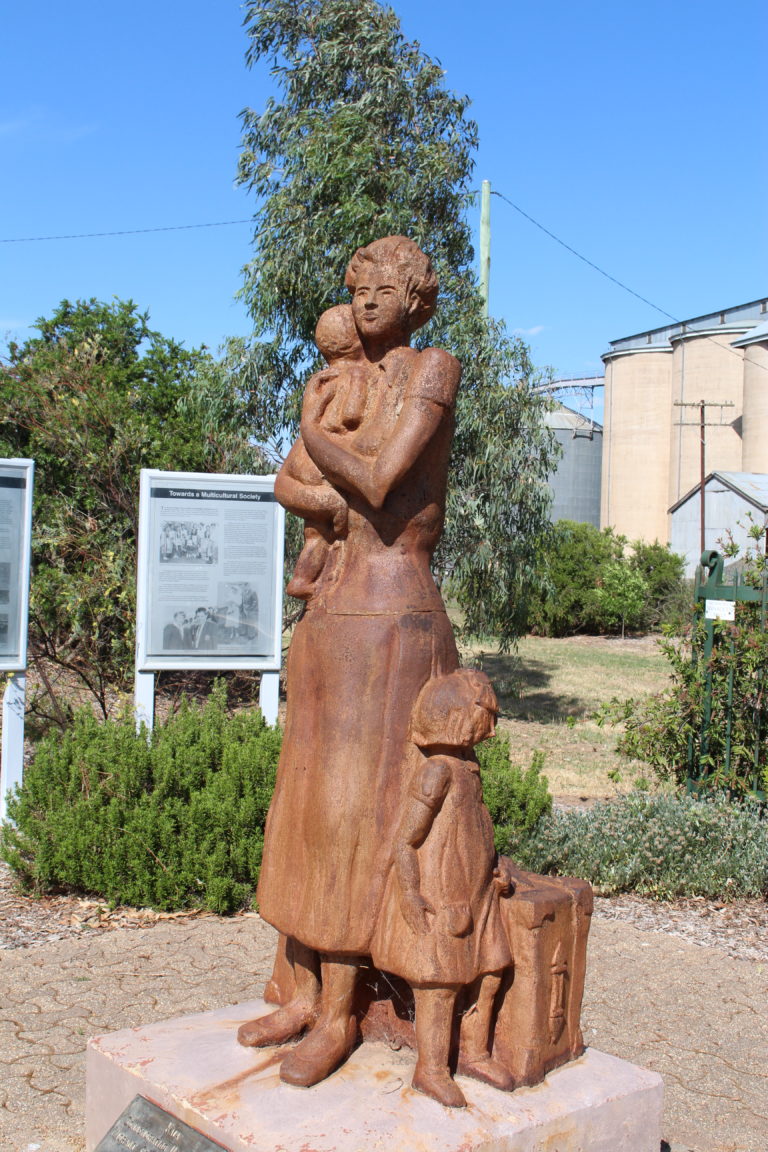
UPA meets at 7.30pm on the second Tuesday of alternate months. All residents welcome to attend. Please let us know if you have any issues you would like to discuss with UPA
Progress Association
Minutes of the UPA meetings pre-date 1900. It is a community based organisation which liaises with government and non-government entities to advise the need for, and request assistance to maintain and improve our village as a wonderful place to live.
We are a small, ever changing band of residents who strive to maintain a village culture whilst ensuring that our community has access to the opportunities enjoyed by larger towns and cities. We publish a quarterly newsletter; manage the local Community Hall, host the ANZAC March and Service and host our annual Christmas Carols Concert at the Hall and Oval.
Current Projects
- Developing Community
- Emergency Protocols
- Developing an Eco-Cultural Garden within the village
President: Deb Bewick
Ph: 02 6922 9744 M:0427 007 261
The History Of Uranquinty
Uranquinty, an unusual name and a unique place on the map.This name is etched in the memory of over 2,000 pilots and airforce personnel who trained here from 1941 to 1958 as well as the 28,000 displaced persons who passed through the migrant camp from 1948 to 1951. There are 250 people who have their place of birth as Uranquinty,on their birth certificates.
The village of Uranquinty began, like most other settlements throughout the area, because of a need for expansion and settlement of new lands during the 1800s and the building of the railway from Wagga Wagga to Albury
Uranquinty is an aboriginal word meaning yellow box tree and plenty of rain.
The town itself had three names. Initially it was called Glenrouth and proclaimed a village on 22 September 1888. In 1889 the name was changed to Uranquintry and then officially altered again in 1966 to Uranquinty, although residents have referred to the last name since the turn of the century.
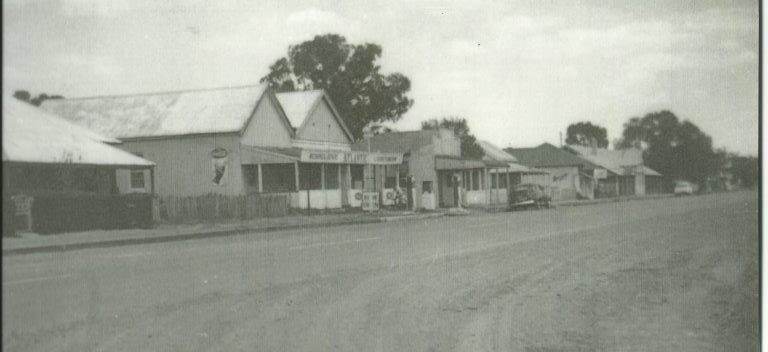
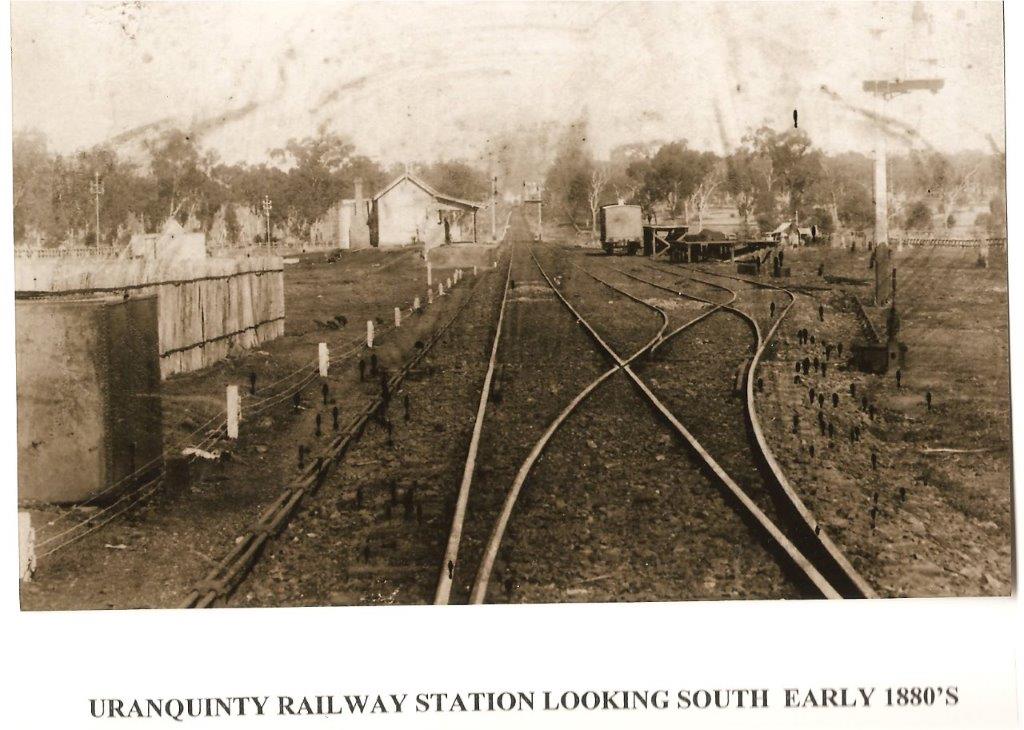
The railway station was opened on 1 September 1880 and was called Sandy Creek Station. This comprised a waiting shed in the middle of the station with a small ticket office at one end which was also used as a post office.
The main road at this time ran on the northern side of the railway line and was known as Hanging Rock Road and it was on this road that the first school was built in 1880 on the western end of the travelling stock reserve. There were numerous hotels built on this road during the construction of the railway line. Although there were five official hotels with names like the Drovers Arms, The Rock of Cashell, the All Nations and The Railway Hotel, there were also numerous illegal shanties. By 1881 as the line moved beyond Albury all hotels in Uranquinty had disappeared and it was to be nine years before another licence was granted for this location.
In 1929 Cyv Taber leased this shop and called it The London Café. During the war years the café became a popular meeting place for service men and women. Both these buildings are still in existence. Most of the town developed on the northern side of the railway line in the early days of settlement and by 1900 there were butchers’ shops, general stores, bakeries, a post office, chaff mill, café and the newly built Public school.
On the southern side of the railway line were the Hotel, Federal Hall, a blacksmith shop and a police station. In 1910 a new community hall was built on the northern side and the Federal Hall became a store and residence.
In 1929 a branch line was built from Uranquinty to Kywong to handle wheat trains and passenger services. In 1941 the landscape of the area changed dramatically when the Department of Defence came in and requisitioned 1002 acres of prime agricultural land to build a training base for pilots under the Empire Air Training Scheme. The cost of construction was £100,000 and began in September 1941. In November 1941 the first 50 trainee pilots arrived to begin their service flying training at No. 5 Service Flying Training School.
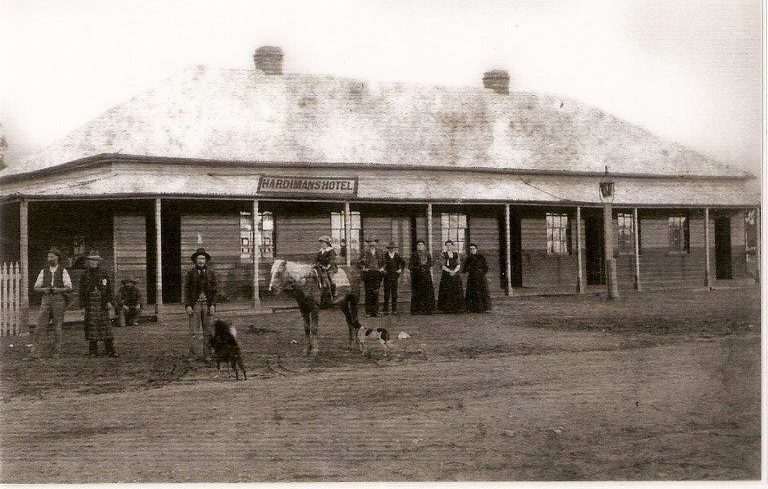
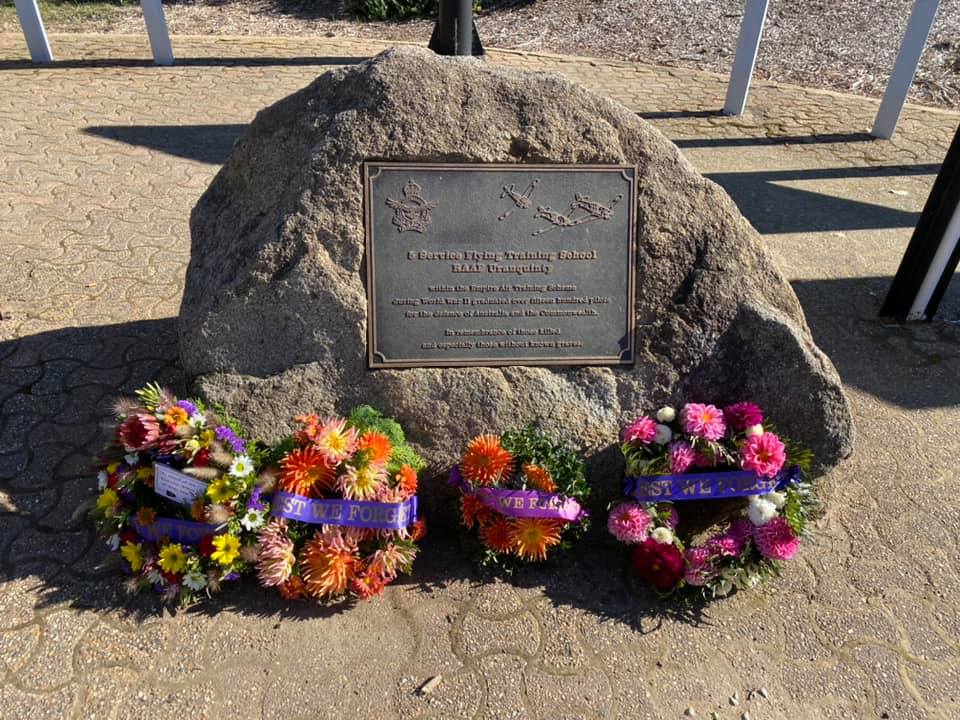

Over 1500 of the 10,000 pilots trained in Australia during the war years received their wings at Uranquinty flying Wirraways. The Word Wirraway is an aboriginal word meaning “challenge.”
In 1945 there was a general winding down of the base and it functioned more as a care and maintenance unit with some refresher courses offered to navy pilots and Dutch pilots. In 1949 the living area of the base was handed over to the Dept of Immigration to be used as a holding camp for East European migrants fleeing war torn Europe. Mostly women and young children, they arrived with all their worldly possessions in boxes and blankets rolls. They came from such places as Yugoslavia, Estonia, Latvia and PolandA school was set up in 1949 to teach mainly English so that the children could be enrolled in state schools when they were resettled. Many of the women were pregnant and over 250 babies were born in the hospital over the next four years. Childhood diseases were also a problem along with a severe outbreak of gastroenteritis which claimed the lives of 5 babies. Other diseases included polio and diphtheria. One such child to contract polio at Uranquinty was John Konrads who along with his sister Ilsa went on to become famous swimmers holding eight individual world records in the late 1950s.
Then in 1951 due to the conflict in Korea, the migrants were transferred to Bonegilla or resettled and the base was reopened as No1 Basic Flying Training School and continued to train pilots until November 1958. During this period the main aircraft used was the Winjeel ,an aboriginal name for “Young eagle.” In 1958 the base was moved to Point Cook, the reasoning being that the Airforce was moving into Jets which needed longer runways and there was not enough room for expansion here.
And so we come to the modern day Uranquinty, with a population of over 800. The railway station has long gone. The last station master left in 1984 and the building was demolished in 1988. The Kywong line closed in 1987 and the grain silos in 2007.The Neighbourhood Centre opened in 1983, the Memorial Hall was sold in 2008 and a new Community Hall opened in 2010 adjacent to the football oval.
The establishment of Wirraway Park is a tribute to all those involved in its construction and maintenance. At the instigation of two ex-trainee pilots and the local community an Airforce memorial was unveiled in 1999 by the Governor Sir William Deane to commemorate all those pilots who trained at Uranquinty and subsequently lost their lives overseas with no known graves. In 2001 a migrant memorial was added and the war memorial returned to Morgan street in 2004.
Uranquinty now has an area which attracts tourists and locals alike and a permanent reminder of the unique history of this village.
